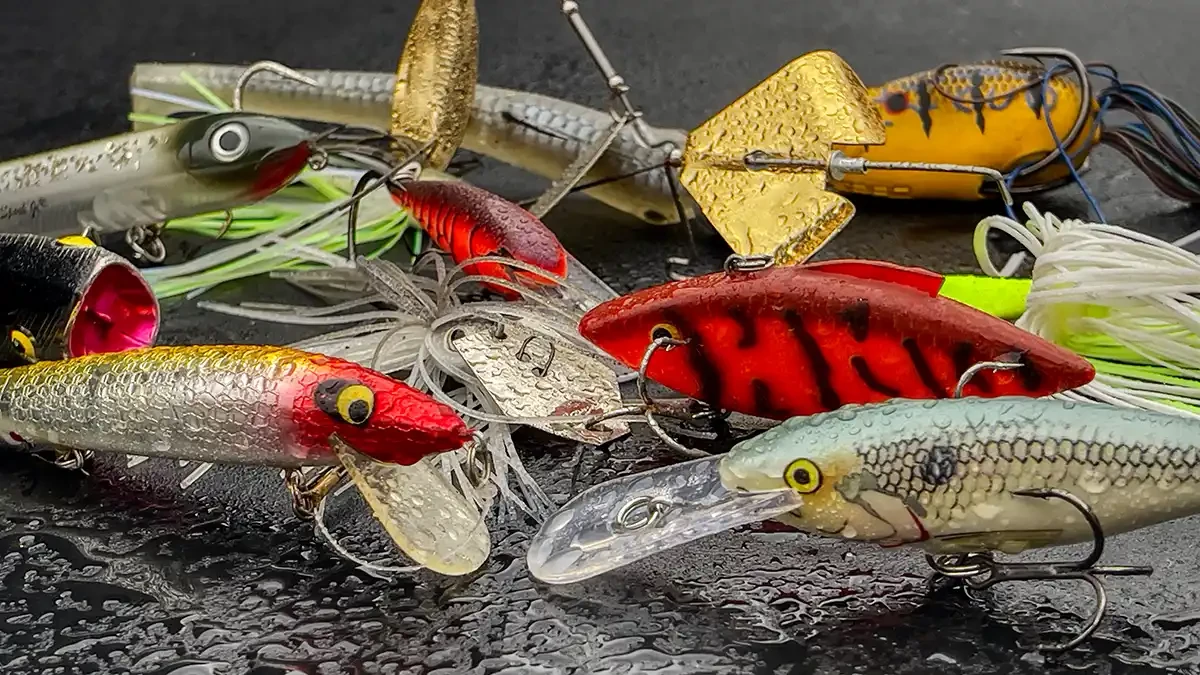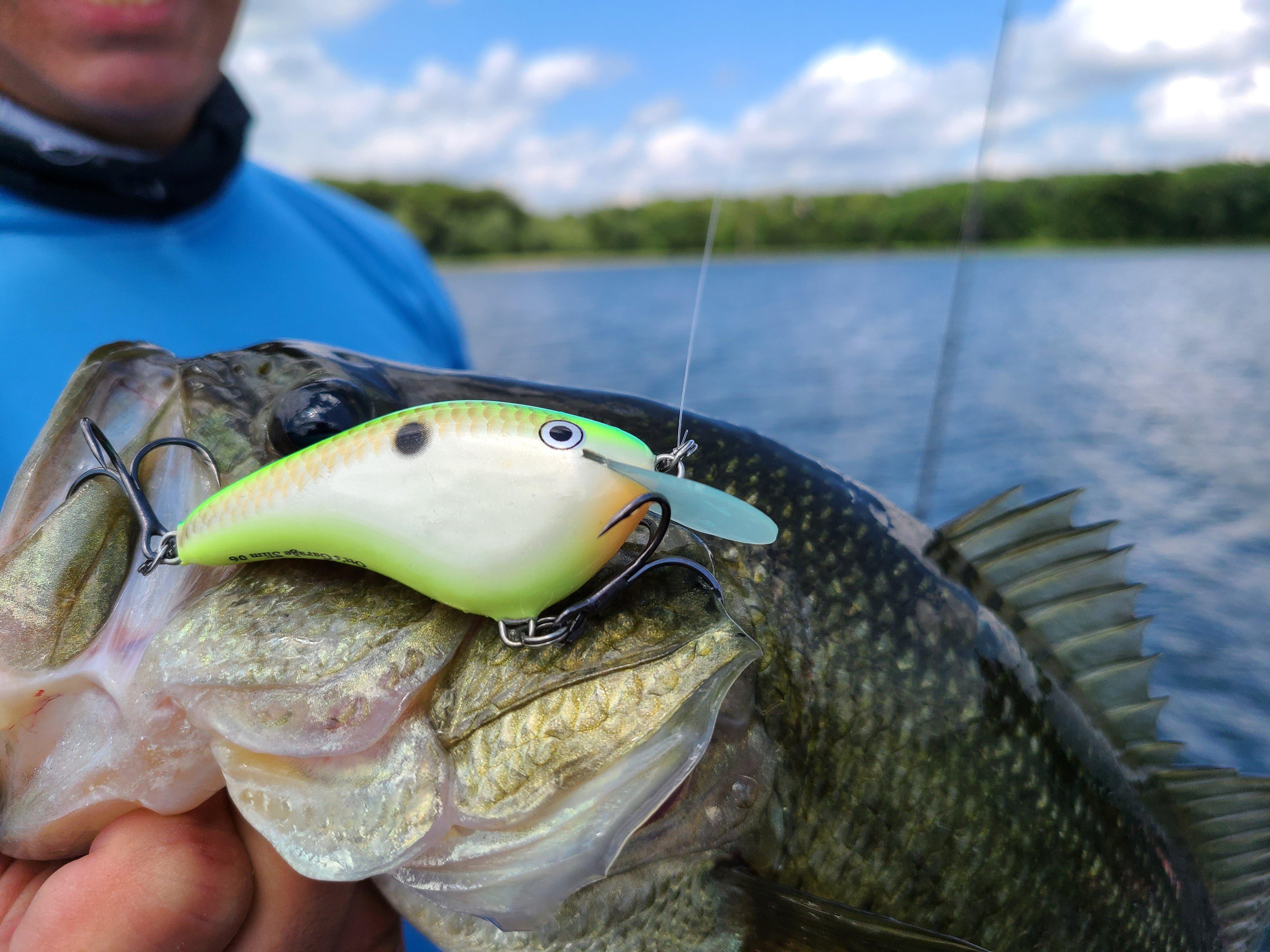Largemouth vs. Smallmouth: Species-Specific Best Bass Lures to Try
Check out the Secrets Behind Reliable Bass Lures to Enhance Your Angling Experience
Understanding the complexities of bass Lures can significantly affect fishing success. Various Lures serve unique objectives, from crankbaits created for broad insurance coverage to jigs that target certain structures. The performance of these Lures usually depends upon aspects such as shade, motion, and seasonal patterns. By mastering these aspects, fishermens can unlock a much more rewarding experience. The inquiry stays: which techniques will produce the finest results on the water?
Recognizing Bass Habits and Habitat
Comprehending the actions and environment of bass is essential for fishermens looking for success on the water. Bass are versatile fish found in numerous freshwater atmospheres, consisting of lakes, rivers, and fish ponds. They have a tendency to like locations with structure, such as immersed rocks, dropped trees, and marine vegetation, which offer sanctuary and searching premises.
Seasonal patterns considerably influence their actions; in warmer months, bass frequently populate shallow waters, while they pull back to much deeper areas during chillier seasons. Best Bass Fishing Lures. Their feeding routines are opportunistic, with a diet consisting mainly of smaller sized fish, insects, and crustaceans
Time of day also plays a role; bass are more active throughout late nights and early mornings. Weather can impact their habits too, as overcast days may urge superficial feeding, whereas brilliant sunlight often drives them to seek cover. Recognizing these patterns equips fishermens with the expertise needed for efficient fishing techniques.
Kinds Of Bass Lures and Their Uses
A selection of bass Lures are essential devices for anglers aiming to attract this prominent video game fish. These Lures can be categorized right into numerous types, each offering distinctive functions. Crankbaits, designed to resemble the swimming action of baitfish, are effective for covering large locations swiftly. Spinnerbaits, featuring revolving blades, create vibrations and flashes that can entice bass hiding in cover. Jigs, with their hefty heads and weedless layout, are suitable for bottom fishing, permitting anglers to existing lure near frameworks where bass commonly prowl. Soft plastics, such as worms and creature lures, use flexibility and can be set up in several ways to adjust to varying problems. Topwater lures, like frogs and poppers, are best utilized during low-light hours when bass are proactively feeding upon the surface area. Each sort of appeal plays a vital duty in improving angling experiences and enhancing the chance of effective catches.

Shade and Layout: What Brings In Bass?
What aspects influence bass attraction to details appeal shades and designs? The interaction of light, water clearness, and the natural surroundings plays a vital duty. Brilliant colors, such as chartreuse and orange, can capture a bass's eye in murky waters, while a lot more controlled tones like blues and eco-friendlies might master clear problems.
Design elements, including form and activity, also considerably effect bass tourist attraction. Lures that imitate all-natural victim, such as baitfish or crawfish, are especially reliable. Furthermore, the visibility of practical details, like ranges or fins, enhances the realistic appearance, additional attracting bass.
Psychological variables, such as a bass's feeding practices and territorial instincts, need to not be ignored. In certain circumstances, strong layouts can provoke a response from aggressive bass, while refined variations can attract more careful fish. Eventually, understanding shade and design subtleties is crucial for enhancing lure efficiency.
Matching Lures to Water Issues
Choosing the best appeal includes greater than just design and color; water conditions play a significant duty in identifying one of the most reliable alternatives. Factors such as water temperature, depth, and quality directly influence bass habits and their feeding patterns. In clear water, all-natural shades and subtle presentations often tend to be more reliable, while dirty problems might ask for brighter, more vibrant Lures that can attract interest.
Temperature likewise influences bass task; throughout warmer months, faster-moving Lures can generate strikes, whereas cooler temperature levels may need slower, much more deliberate presentations. Additionally, much deeper waters typically require much heavier Lures that can reach the preferred depth, while superficial areas are better suited for lighter, surface-oriented options.
Techniques for Reliable Tempt Discussion
Understanding the methods for efficient lure presentation can considerably enhance fishing success. Fishermens need to focus on the rate and rhythm of their retrieves, adjusting them to resemble the natural motion of victim. A consistent get works well for many appeals, but including stops can trigger strikes from much more mindful fish. In addition, differing the depth of the lure is vital; using different spreading angles and readjusting the reel can aid target fish at different depths.
Making use of a mix of finesse discussions, such as twitching or dragging the attraction throughout the base, can also be reliable. It is essential for fishermens to check out the water and adjust their strategies based on visibility and structure. Offering Lures near cover, like immersed rocks or plants, usually produces better results, as bass often tend to seek shelter. Ultimately, explore various techniques will bring about a much more gratifying angling experience.
Seasonal Considerations for Tempt Choice
Seasonal adjustments dramatically influence bass habits and appeal performance. As water temperatures rise and fall, anglers helpful hints should readjust their lure choices to align with pre-spawning and post-spawn conditions. Understanding these seasonal patterns can improve angling success by targeting bass at their most active times.
Seasonal Water Temperature Level Effects
As water temperature levels fluctuate throughout the year, bass habits and feeding patterns transform, influencing the performance of numerous appeals. During cooler months, bass tend to become inactive, preferring slow-moving Lures that resemble struggling victim. In comparison, as temperature levels rise in spring, bass end up being extra energetic, making faster, more aggressive Lures reliable. Mid-summer sees bass seeking much deeper, cooler waters, demanding the use of Lures that can reach these depths. As temperature levels start to drop in fall, bass usually feed greatly to prepare for winter months, making functional Lures that can copy a selection of forage kinds especially effective. Understanding these seasonal temperature effects permits anglers to choose proper Lures that line up with bass habits, maximizing their fishing success.
Pre-Spawning Lure Choices
What variables affect the selection of Lures during the pre-spawning period for bass? Fishermens have to consider water temperature, weather, and the bass's feeding actions. As temperatures rise and days lengthen, bass come to be extra aggressive and active, prompting a shift in their feeding patterns. Throughout this time, tempts that resemble the all-natural target of bass-- such as shad or bluegill-- are especially efficient. Popular selections include spinnerbaits, lipless crankbaits, and jigs, which can be fished at numerous midsts. Furthermore, fishermens should concentrate on areas with cover, such as submerged plants or rough structures, as these spots frequently bring in pre-spawn bass. Bass Lures. Understanding these aspects can considerably enhance the opportunities of an effective angling journey throughout this vital seasonal phase
Post-Spawn Techniques Adjustments
Although post-spawn bass show various behaviors than during the pre-spawn stage, efficient lure selection remains crucial for anglers aiming to target them successfully. After spawning, bass usually become inactive and seek much deeper waters, making it necessary to readjust appeal choices accordingly. Anglers ought to take into consideration utilizing slower-moving baits, such as jigs or soft plastics, which can lure bass that are much less hostile. Crankbaits with a subtle action can likewise be effective, enabling a slower presentation that simulates the all-natural post-spawn forage. Additionally, fishing near framework, such as submerged plants or rocks, can enhance possibilities of success. By recognizing these seasonal adjustments, anglers can improve their fishing experience and enhance their catch prices throughout the post-spawn duration.
Frequently Asked Questions
Exactly how Do I Select the Right Pole for Bass Angling?
To pick the right rod for bass angling, one must consider the rod's length, my response activity, and power. A medium to medium-heavy rod, around 6 to 7 feet, is typically ideal for adaptability and control.

What Is the very best Time of Day to Capture Bass?
The very best time of day to catch bass is usually very early morning and late afternoon. Throughout these durations, bass are much more energetic, feeding near the surface, making look at here them less complicated targets for anglers utilizing reliable lures.
How Do Climate Condition Impact Bass Angling Success?
Weather conditions dramatically affect bass angling success. Warmer temperatures and overcast skies usually urge bass task, while cold spells can cause sleepiness. Rainfall can also enhance feeding habits, making it vital for fishermens to adjust their methods accordingly.
Can I Make Use Of Lures for Other Fish Species?
Yes, tempts created for bass can also be effective for other fish species. However, selecting the appropriate size, color, and action according to the target species and their feeding habits remains essential for success.
What Prevail Mistakes When Using Bass Lures?
Usual blunders when using bass Lures consist of picking unacceptable dimensions or colors, getting as well rapidly, failing to adjust to climate condition, and not considering water depth. These mistakes can substantially decrease the opportunities of an effective catch.
As water temperature levels rise and fall throughout the year, bass habits and feeding patterns change, affecting the effectiveness of numerous lures. Mid-summer sees bass looking for deeper, cooler waters, demanding the use of Lures that can get to these depths. Post-spawn bass exhibit various habits than throughout the pre-spawn phase, effective attraction selection continues to be vital for anglers intending to target them successfully. After generating, bass frequently come to be inactive and seek much deeper waters, making it crucial to adjust appeal choices as necessary. Common blunders when using bass Lures consist of selecting unacceptable sizes or shades, recovering too promptly, stopping working to adjust to weather problems, and not considering water deepness.